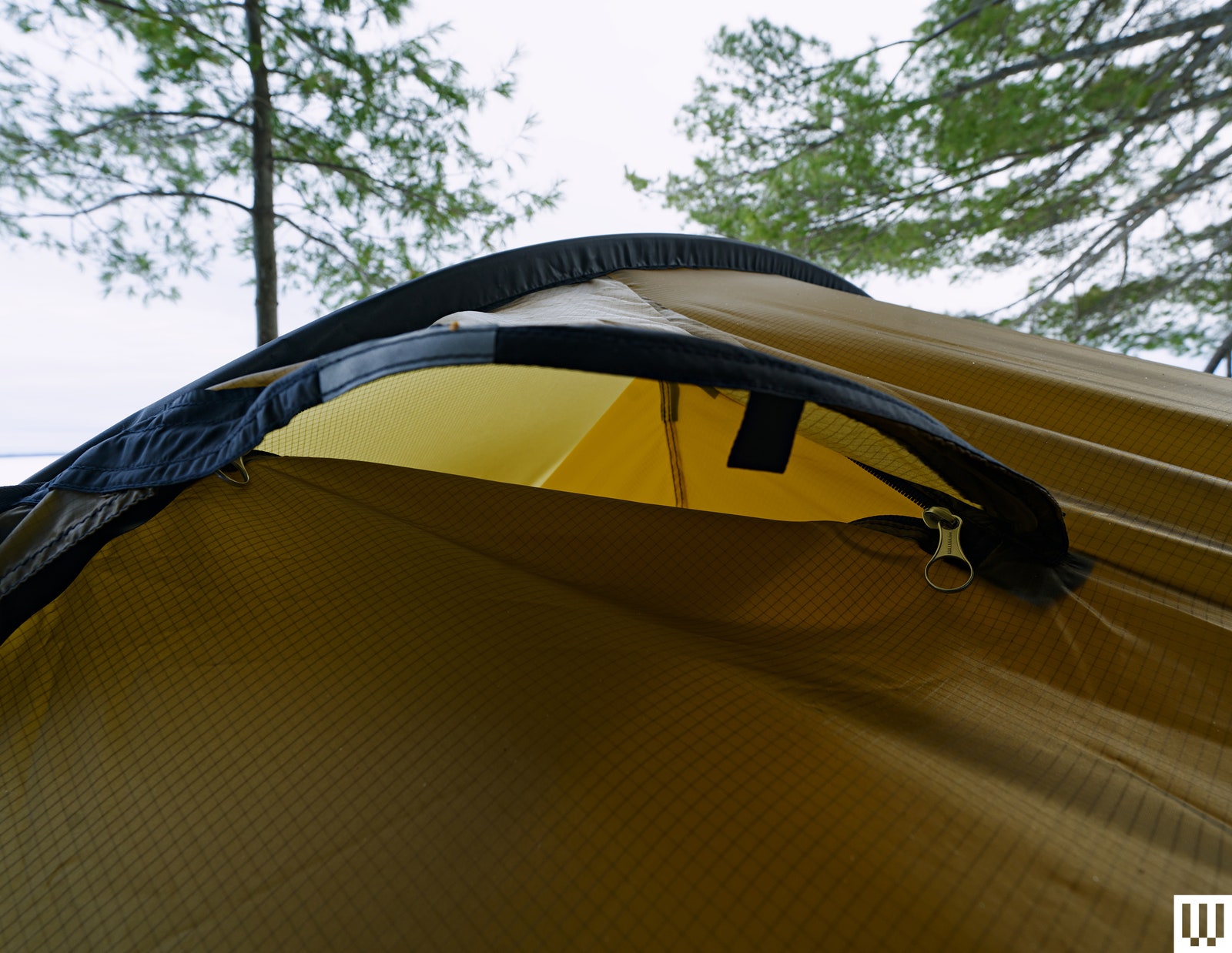Hilleberg, a small, unassuming Swedish company, has been quietly churning out some of the sturdiest, toughest, most wind- and weather- resistant, best-made backcountry shelters you can buy for decades. The Akto was first released in 1995 and has seen only one design change in all those years. This is why Hilleberg has something of a cult following. Hilleberg tents are also very expensive, which has always left me wondering, “Are they worth it?”
To find out, I had Hilleberg send me its iconic four-season, one-person, hoop-style tent—the Akto. With a retail price of $740 (though you can find it for less on sale), it’s not cheap, but after using it for nearly two weeks this fall and into winter, I think it’s absolutely worth the money. The Akto is the best tent I’ve ever used by a very wide margin. It’s not perfect, but it’s the best solo tent you can buy, and I’m pretty sure it’s the only thing made of nylon that might have a shot at making our Buy It For Life guide.
Think Different
Photograph: Scott Gilbertson
The Akto was a groundbreaking tent when it arrived on the scene in 1995. (For reference, the name means “alone” in the language of the Sami, the indigenous people of northern Scandinavia.) Back then, almost no one was making four-season one-person tents, no one was using silicone nylon—now the standard fabric for lightweight tents—and no one was making hoop tents. Fast-forward to today, and while a significant portion of the outdoor industry now makes such things (e.g., Tarptent’s Scarpa 1), the Akto remains more or less the same tent. When something works, don’t mess with it. (Although technically, Hilleberg did add the little vent hood over the fly door at some point, and I’m glad they did. It might be my favorite feature.)
Enough history, let’s get into the tent. Unless you’ve been using cottage industry ultralight tents, it’s probably very different than most backpacking tents you’ve used.
There are two things that set Hilleberg’s Akto apart. The first is the hoop-style design. The other thing that makes this tent different is the fabric, which is tougher and lighter (albeit maybe not ultralight) than most other tents I’ve tested. More on that below.
The Akto is not freestanding. The design consists of a single curved pole in the middle of the tent, like the hoop of a covered wagon. The ends are then staked out from that curved center pole, with two stakes at each end. There are some advantages to a freestanding design, like being able to easily move the tent after it’s set up. But after spending time with the Akto and other non-freestanding designs, I have found that I’m fine with the trade-offs. Skipping the freestanding design gives you a lighter tent, with a great low-end wind profile, while remaining plenty strong enough should the wind shift in the night. It’s also easier to pitch.
Photograph: Scott Gilbertson
Services Marketplace – Listings, Bookings & Reviews

-SOURCE-Scott-Gilbertson.jpg)
-SOURCE-Scott-Gilbertson.jpg)